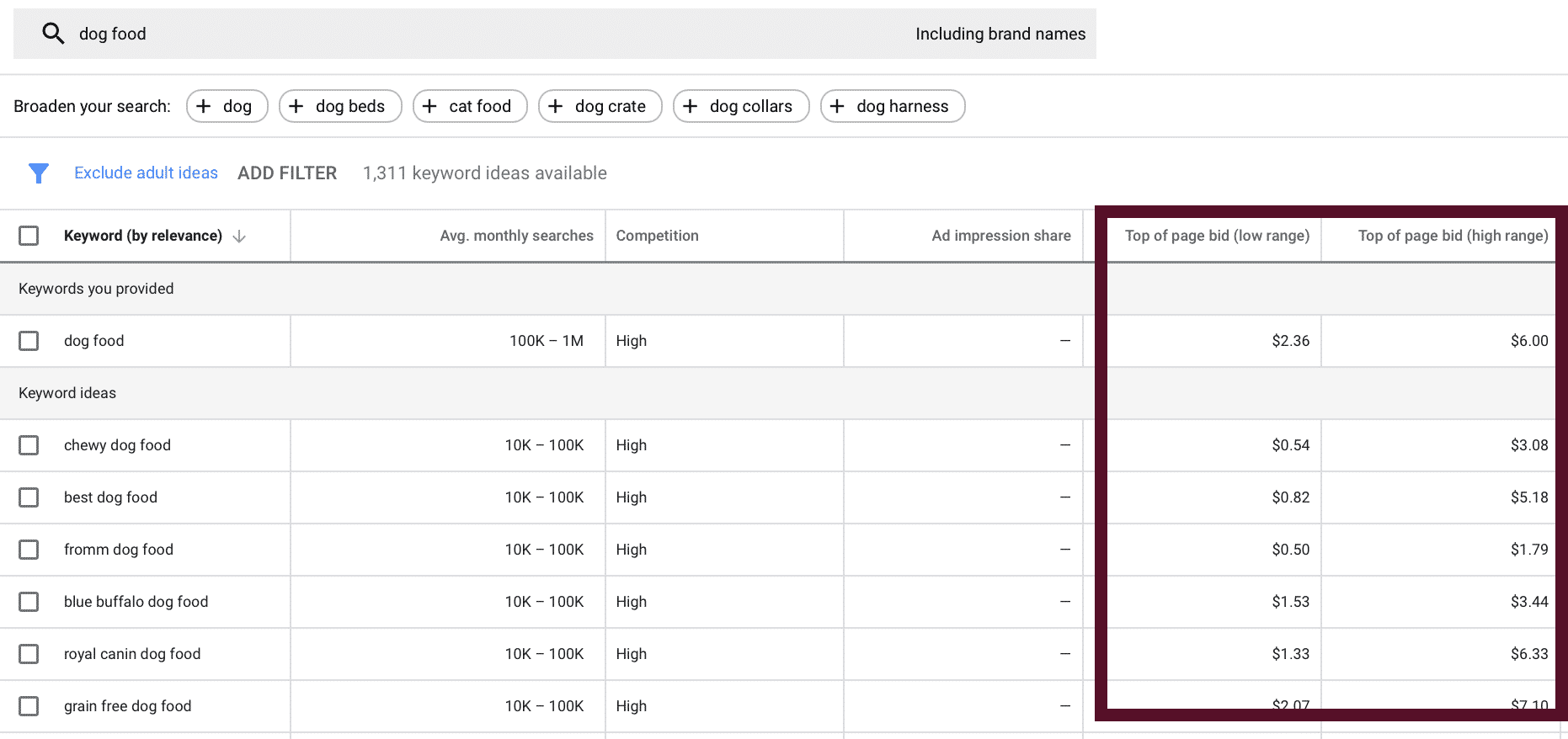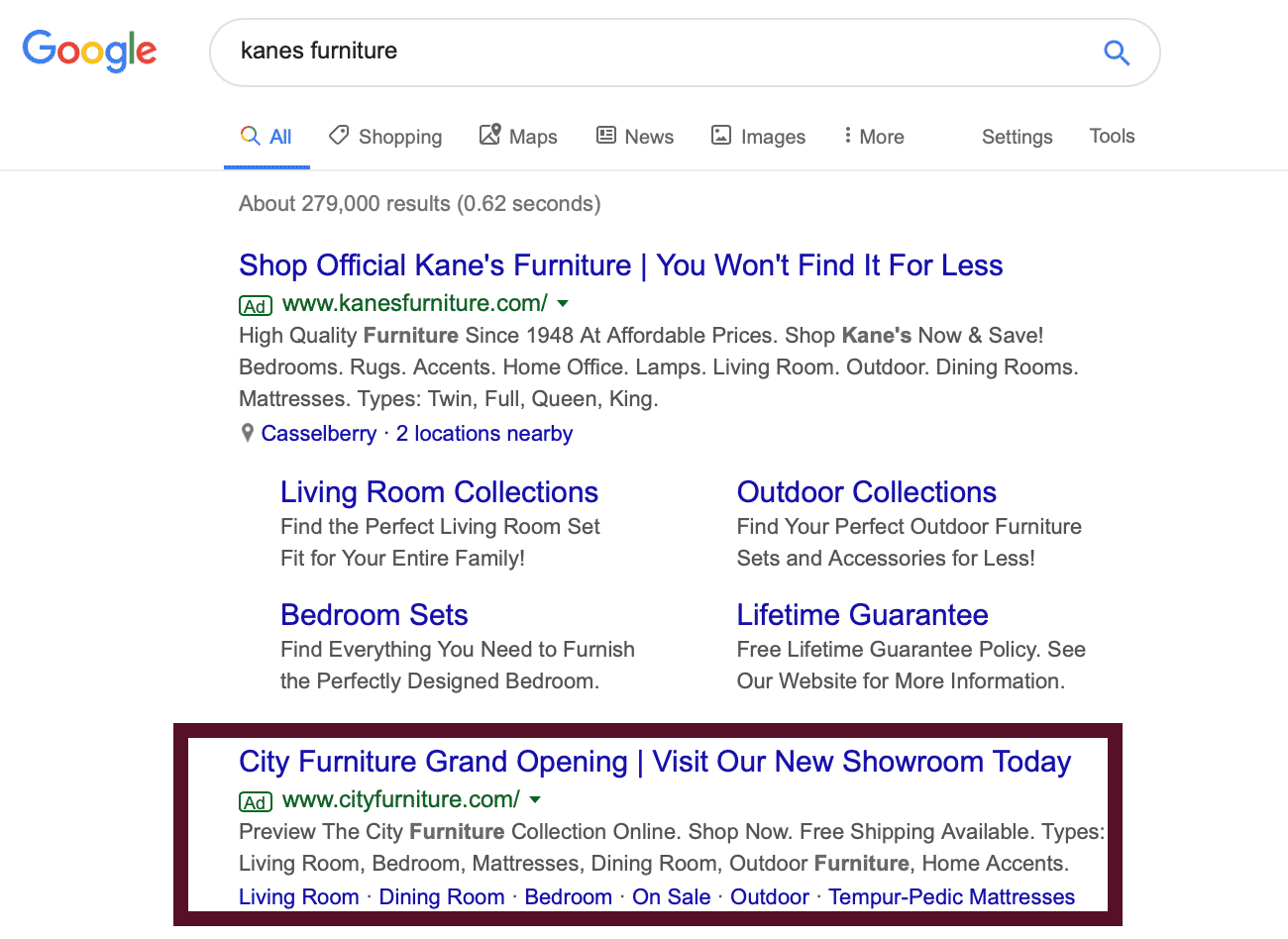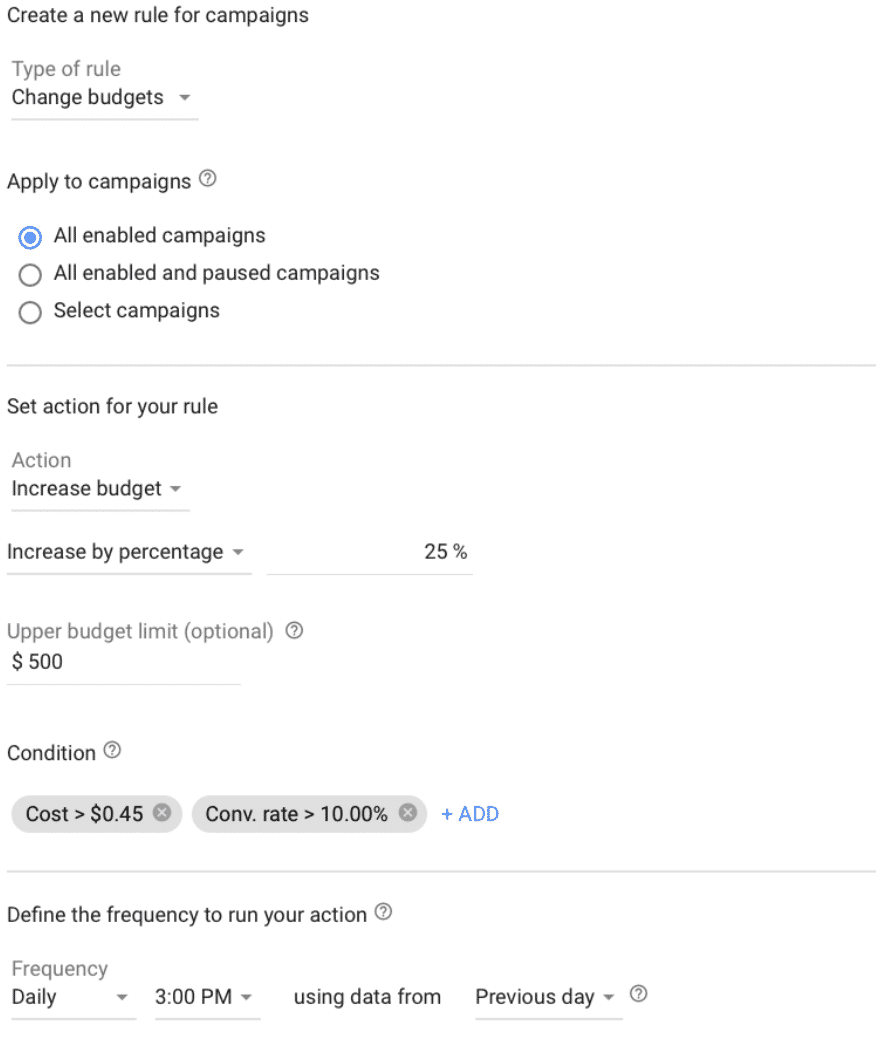7 Google Ads Keyword Bidding Tips You Need to Try
by Ana Gotter • October 10, 2019
Let’s talk bidding.
Google’s search ads revolve around keywords that you (the advertiser!) choose in order to trigger placements of your campaigns in relevant searches. This is how Google is able to serve relevant ads to users who are trying to do research and find content, brands, products, and services like yours.
It’s extremely important, therefore, to create a strong, well-researched list of keywords for each campaign. It’s also important to make sure that you’re bidding on those keywords correctly.
How much you bid on each keyword group makes a huge impact on your campaign. The more you bid, the more likely you are to not only grab more placements, but to snag higher-ranking placements, too.
If you bid too much, however, you run the risk of running your campaign straight into the ground and thwarting any potential for profitability. Bid too little, however, and you’ll struggle to rank well enough to get results, and you could be accidentally handing over sales to your competition as a result.
There’s a lot riding on keyword bidding, but the right tactics can help you find the sweet spot for each keyword a little faster and more effectively. Let’s take a look at 8 of the most reliable keyword bidding tips to implement in your campaign management strategies.
1. Go in With Clear Bidding Ceilings for Each Keyword
When you’re doing keyword research, you may see that there’s a keyword you really want to rank for, and you decide right then and there to bid at the high end of the range.
Wait! Before you actually do that, you need to calculate whether or not this would be profitable for you.
First, think about your average customer lifetime value (CLV), which tells you how much a customer is worth to you over the lifetime of their relationship with your business. Then consider costs that go into reaching them, and assume that only a relatively small chunk of users who click on your ad will actually convert.
If you’re selling leather leashes for dogs for $40 a pop and the average CLV is $120, you may think that a $10 click is easily worth it. If you realize, however, that only 1 in 100 people who click will actually convert, that huge profit margin gets a little smaller, and if Google Ad customers have lower CLVs than your standard customers, you could actually lose profitability. This is particularly true once you factor in introductory discounts and shipping costs.
Because of this, establish a clear bidding ceiling for all of your keywords. If you know that you can’t afford to spend $2.32 per click in customer acquisition campaigns, keep this as a hard and fast rule. That’s your bidding ceiling, and it’s best to avoid trying to ram your head up against it.
2. Find the Sweet Spot Between Positioning and Cost
When you look at almost any keyword research tool, they’ll typically show you a CPC range, giving you a number on the low end and one on the high end.

Gut instinct says that to be competitive, you should bid away as high as you can, but this isn’t always the case.
While having a high ad placement ranking is great and can absolutely increase visibility and clicks, coming in at the top slot of all of your placements could mean that you’re bidding too high. Eventually, this can eat into your profit margins, especially if you can drop costs and still see your CTR and conversion rates hold steady.
Do some testing, and find the sweet spot between a high ranking and a slightly lower cost. This will maximize your ROI, which is an important goal for most businesses and will actually give you more ad spend back in your budget that you can use to reach additional users moving forward. Which would you rather do, after all: Spend $5 on a single top-ranked placement that clicks, or spend the same amount and have your ad seen by 15 different users?
You need reach to be successful at scale here, so keep that in mind.
3. Outbid Your Competition on Their Best Keywords
If you’re going all in, it can help to know which keywords you should invest in from the start. And what better place to start than the keywords your competition than to get their top results?
Competitor research tools will help you find your competition’s top keywords that’s driving the most traffic to their site. Plenty of these tools—including my personal favorites, SEMrush and SpyFu (pictured below)—will even show you exactly how much your competitors are bidding on these keywords.

Take advantage of this, and come up with competitive (but affordable-to-you) bids.
You may find, for example, that they’re driving a ton of clicks by bidding low on their own branded keywords. If you bid on them, you might earn a few of those low-cost clicks and directly steal competition away from them. You might see other high-value keywords that seem to be getting them a lot of traction and add it to your list, too.
4. Bid More on High-Intent, High-Value Keywords
Some keywords are going to be inherently worth more than others.
If you’re selling those leather dog leashes, for example, a keyword like “puppy supplies” could get you clicks and conversions. ?It’s a relevant audience, after all.
You’ll have a higher likelihood of getting that conversion, however, if someone is searching for the phrase “leather dog leash” or “high-quality leash for dogs.” The latter options are much more high intent, so if you get a click here, there’s a better chance they’ll be ready to purchase.
Clicks from the second campaign are likely to be more lucrative, and thus more valuable. You can afford to spend more to capture high-intent audiences who are further along in the buying cycle.
5. Bid on Your Competitor’s Branded Keywords
This is a highly specialized keyword bidding tip, but it’s a strong one nonetheless.
A solid keyword strategy is to bid on your competitors’ branded keywords. City Furniture does this in the example below, clearly bidding on their competitor’s name, Kane’s Furniture.

The good news here is that while you have to run specialized campaigns that don’t use dynamic keyword insertion, you can absolutely snag some potential customers from your competitors at a low cost. Branded keywords are almost always much more cost-effective than other short-tail keywords like “furniture” or “home decor,” so you can attract more clicks at a lower cost.
6. Limit Reactionary Responses
A lot of advertisers are reactionary people. They’ve seen campaigns gone bad, and they don’t want it to happen again. The second it seems like a campaign might be fizzling or not living up to its potential, many of us are guilty of swooping in and making changes right away.
Here’s the problem with that: Sometimes, being too reactionary too quickly means we’re not getting to see how our changes are actually impacting our campaigns. We’re making additional adjustments too quickly before things stabilize, robbing ourselves of potential results and more accurate data.
Avoid this by giving all changes at least a week to settle in, especially if your budgets are lower to start with during early testing phases. This is enough time for Google’s quality score to assess your CTR, and for you to have enough hard data to actually see what needs to be tweaked.
It’s hard, but hold your breath. You’ll have a much more accurate view of what steps to take next if you pause before you leap.
7. Test Automation Before Trusting It Completely
Google Ads has some truly incredible automated rules. If you want to pause a campaign the second the CPC climbs over $2.50 or the CTR falls too low, you can shut it down fast without doing anything, as long as you’ve programmed that rule into your campaign manager ahead of time.

Automation is a huge asset that can streamline the campaign management process, but that doesn’t mean you should hand over the reins to simple rules you’ve created yourself. Some manual management will still be needed, and there may be consequences to a rule that you hadn’t considered.
For example, I once had a client set a rule to increase the budget by $10 a day as long as the conversion rate was high. This was a disaster because the conversions were high because his bids were much higher than they needed to be, and he blew through much more money than he ever intended on what amounted to preliminary tests.
My best recommendation is to leverage automation to make your job easier, but to never set it on true autopilot completely or use it as a replacement for manual review. Otherwise, bids can go wonky before you know it, derailing your campaigns without you being any the wiser.
Final Thoughts
Getting your keyword bidding strategies—and the actual bids themselves—correct is paramount to success on your Google Ads campaigns. Without strong bidding strategies, you’ll run the risk of spending too much, putting high value on the right keywords, or bidding so low you’re keeping yourself out of the game. You need to go in with a strong strategy and know-how and when to react based on the data in front of you.
Remember that the Google Ads marketplace is fluid and dynamic, so you need to monitor your bids carefully and adjust them accordingly as things fluctuate. This is normal, so never set your campaigns on autopilot and watch them closely, checking in at least once per week.
Looking for extra help managing your Google Ads keyword bidding strategies? We’ve got you covered. Learn more about what we can do for you here!
What do you think? Have you ever used any of our bidding strategies? Which ones worked best for you? Share your thoughts and questions in the comments below!




